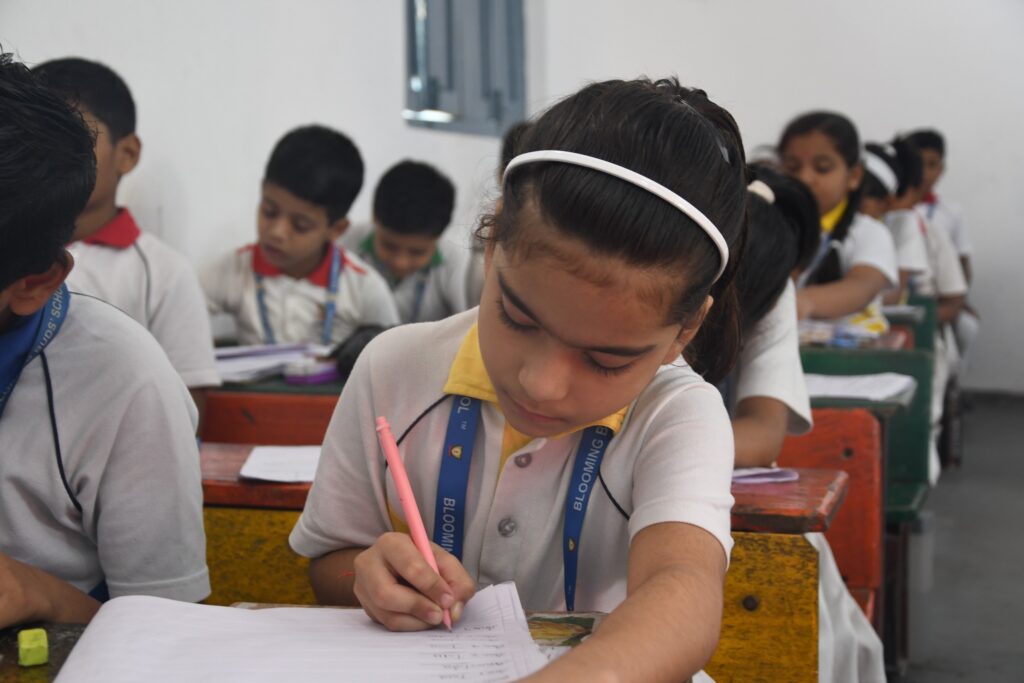In today’s fast-paced, distraction-filled world, the ability to stay focused and retain information is more important than ever. Students often struggle with attention span, stress, and overwhelming amounts of information to process, making effective learning a challenge. One powerful approach that can help students overcome these obstacles is mindful learning. By incorporating mindfulness techniques into the classroom, educators can enhance students’ focus, reduce stress, and improve their ability to retain and apply what they learn.
What is Mindful Learning?
Mindful learning is the practice of being fully present and engaged in the learning process. It involves cultivating awareness of one’s thoughts, feelings, and surroundings without judgment. In the classroom, this means encouraging students to focus on the present moment, tune out distractions, and actively engage with the material in a calm, focused way.
The benefits of mindful learning extend beyond academic performance. It also fosters emotional well-being, promotes self-regulation, and improves overall cognitive function. As students become more aware of their internal states, they develop greater control over their attention and reactions, leading to more effective learning experiences.
Benefits of Mindful Learning in the Classroom
- Enhanced Focus and Attention Mindfulness practices help students improve their ability to sustain attention for longer periods, which is crucial in today’s world of constant distractions. Mindful learning encourages students to be fully present, filtering out external stimuli that might otherwise interfere with their concentration.
- Reduced Stress and Anxiety Learning can often be a source of stress for students, especially during exams or complex assignments. Mindfulness exercises, such as deep breathing or body scans, can help calm the nervous system and reduce feelings of anxiety, making it easier for students to absorb and retain information.
- Improved Memory and Retention Research shows that mindfulness can enhance cognitive functions such as working memory and information processing. By focusing on the present moment and reducing mental clutter, students can better retain and recall information when needed.
- Increased Self-Awareness and Emotional Regulation Mindfulness encourages students to reflect on their thoughts and emotions. This self-awareness helps them recognize when they are distracted, frustrated, or overwhelmed, allowing them to manage these feelings and return to a focused state. Emotional regulation is essential for maintaining a productive and positive learning environment.
- Better Classroom Environment When students practice mindfulness, it not only benefits their individual learning but also improves the overall classroom atmosphere. Mindful students are more likely to demonstrate patience, empathy, and respect for their peers, leading to a supportive and collaborative learning environment.
Techniques for Cultivating Mindful Learning in the Classroom
Incorporating mindfulness into the classroom doesn’t require a complete overhaul of the curriculum. Teachers can integrate simple, practical strategies into their lessons to help students develop mindful habits.
1. Mindful Breathing Exercises
One of the simplest ways to begin practicing mindfulness is through breathing exercises. Begin or end each lesson with a few minutes of deep, focused breathing. Guide students to inhale slowly through their nose, hold for a few seconds, and exhale through their mouth. This helps calm the mind and prepare students for learning.
2. Mindful Listening
Encourage students to practice mindful listening by focusing their attention entirely on the sounds around them—whether it’s the teacher’s voice, classmates’ questions, or even the ambient noise in the classroom. This practice helps students sharpen their listening skills and develop the ability to tune out distractions.
3. Mindful Movement
Incorporate short physical activities, such as stretching or yoga poses, to help students re-center themselves. These activities allow students to check in with their bodies, release tension, and refocus. A quick movement break can be especially effective during long lessons or before transitions.
4. Body Scan Meditation
A body scan is a mindfulness technique in which students focus on different parts of their body, noticing any sensations or tension. This can be done in just a few minutes and helps students relax and bring attention to the present moment. It’s a great tool to use before a test or during moments of stress.
5. Focused Attention Activities
Implement activities that require students to focus on one task at a time. For example, have them work on a short writing or drawing exercise in silence for a few minutes, encouraging them to focus solely on the task at hand. Avoid multitasking, as it can decrease attention span and retention.
6. Mindful Reflection
After lessons or activities, take a moment for reflection. Ask students to think about what they learned, how they felt during the lesson, and whether they encountered any challenges. This reflection helps students internalize their learning and identify areas for improvement.
Overcoming Challenges to Mindful Learning
While mindfulness can be a highly effective tool for learning, there are a few challenges that educators might face when integrating these practices into their classrooms.
- Student Resistance: Some students may initially be resistant to mindfulness practices, particularly if they are unfamiliar with the concept. To address this, explain the benefits of mindfulness in clear, relatable terms and start with simple, short exercises.
- Time Constraints: With packed curricula and limited class time, it can be difficult to find space for mindfulness activities. However, even brief sessions (5-10 minutes) can have a significant impact on student focus and well-being. Consider integrating mindfulness moments throughout the day rather than reserving a specific time.
- Lack of Training: Teachers may feel unprepared to lead mindfulness activities. However, many resources and training programs are available to help educators build their mindfulness skills. With practice, teachers can confidently guide students through mindfulness exercises.
Conclusion
Mindful learning is a powerful tool that can enhance focus, retention, and overall well-being in the classroom. By incorporating simple mindfulness techniques into daily lessons, educators can help students cultivate a greater sense of awareness, manage stress, and engage more fully with the material. As mindfulness becomes an integral part of the learning experience, students are more likely to develop the skills necessary for lifelong success—both academically and personally.
In the end, mindfulness isn’t just about quieting the mind; it’s about creating a space where students can truly be present, think clearly, and thrive in their learning journey.


